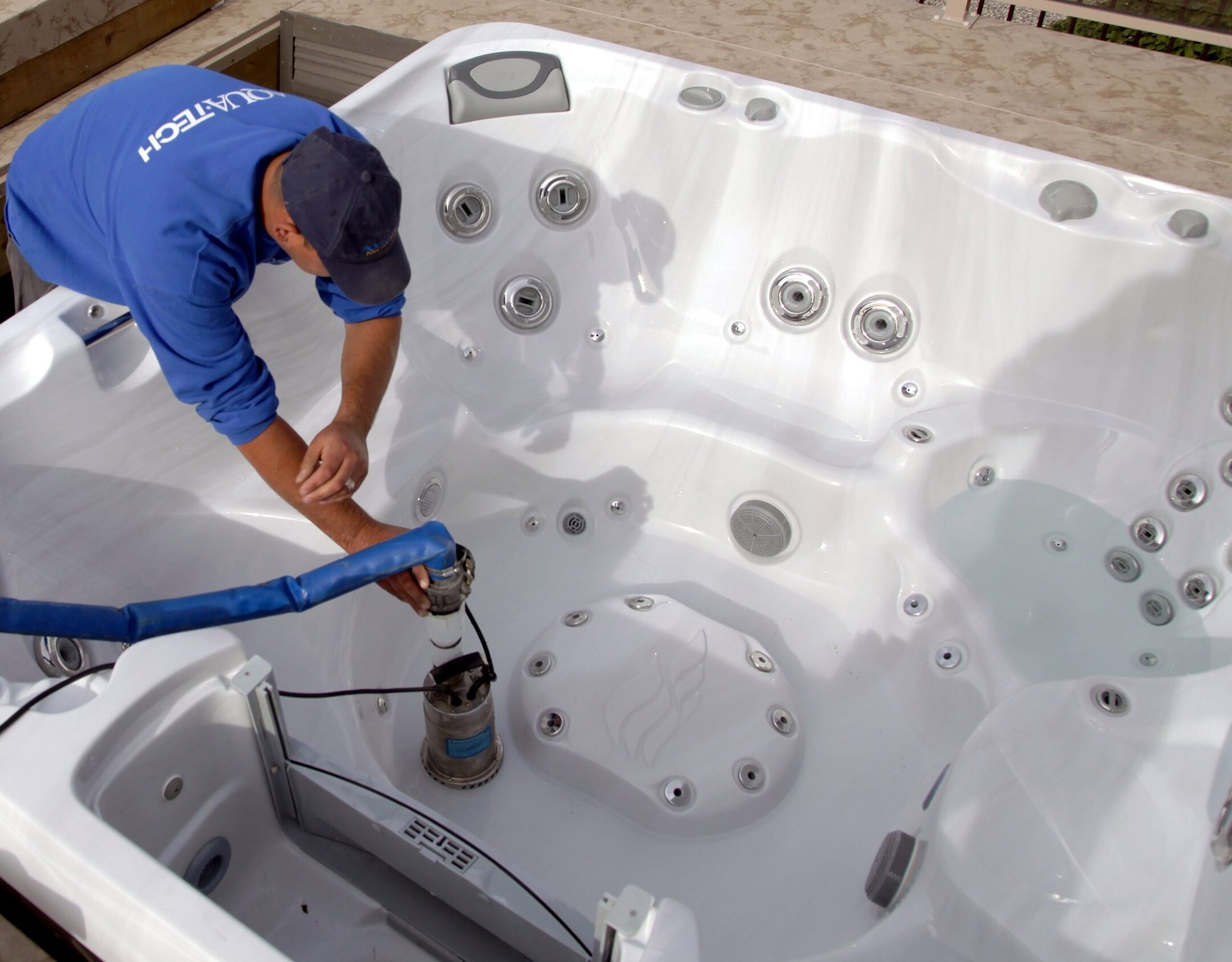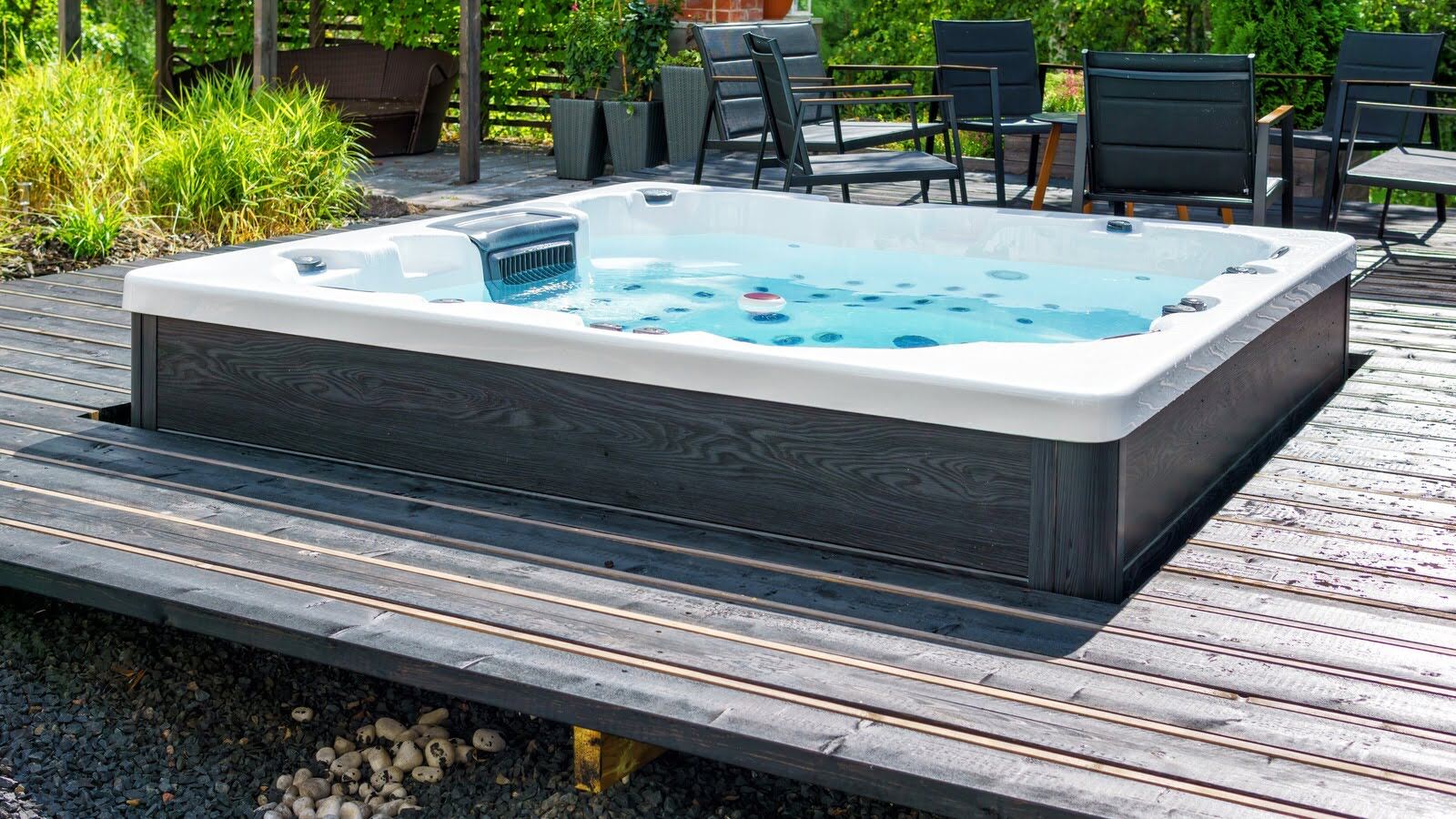Home>Gardening & Outdoor>Pool & Spa Care>How Often Do You Have To Drain A Hot Tub


Pool & Spa Care
How Often Do You Have To Drain A Hot Tub
Modified: October 30, 2024
Learn the best practices for pool and spa care. Find out how often you need to drain a hot tub and keep your pool and spa in top condition. Expert tips and advice.
(Many of the links in this article redirect to a specific reviewed product. Your purchase of these products through affiliate links helps to generate commission for Storables.com, at no extra cost. Learn more)
Introduction
Owning a hot tub is a luxurious and relaxing experience, offering a private oasis for unwinding after a long day or entertaining friends and family. However, to keep your hot tub in pristine condition and ensure a safe and enjoyable soak, it's essential to understand the importance of regular maintenance, including the frequency at which you should drain the water.
In this article, we will explore the various factors that influence the recommended hot tub drain frequency, signs that indicate your hot tub is due for a water change, and the step-by-step process for draining your hot tub. By the end, you will have a comprehensive understanding of how often you should drain your hot tub and the necessary steps to maintain a clean and inviting spa environment. So, let's dive in and uncover the secrets to keeping your hot tub in optimal condition!
Key Takeaways:
- Regularly draining your hot tub every three to four months helps maintain a clean and enjoyable soaking experience, but factors like usage, water care products, and environment can influence the frequency.
- Signs that your hot tub needs draining include cloudy water, strong chemical odor, persistent foam, difficulty balancing chemicals, and visible debris. Promptly addressing these signs ensures a hygienic and inviting spa environment.
Read more: How Often Do You Shock A Hot Tub
Factors Affecting Hot Tub Drain Frequency
The frequency at which you should drain your hot tub depends on several crucial factors. Understanding these variables will help you determine the appropriate schedule for water changes, ensuring that your hot tub remains clean and safe for use.
- Frequency of Use: The more frequently your hot tub is used, the more contaminants, such as body oils, lotions, and sweat, accumulate in the water. As a result, regular users may need to drain their hot tub more often to maintain water quality.
- Water Care Products: The type and quantity of water care products, such as chlorine, bromine, or alternative sanitizers, used in your hot tub can impact the frequency of water changes. These chemicals play a crucial role in disinfecting the water and breaking down organic matter, but they also accumulate over time and may require a fresh start with new water periodically.
- Environmental Factors: The surrounding environment can introduce debris, pollen, and other impurities into your hot tub. If your spa is located near trees, plants, or in an area prone to dust and pollen, the water may require more frequent changes to combat external contaminants.
- Water Quality Testing: Regular testing of your hot tub water is essential for monitoring its chemical balance and cleanliness. If the test results consistently indicate imbalanced water chemistry or high levels of contaminants, it may be time to drain and refill the tub.
- Hot Tub Size: The size of your hot tub directly impacts the volume of water it holds. Larger hot tubs may require less frequent water changes compared to smaller ones, as the dilution effect is greater in larger bodies of water.
By considering these factors and evaluating your specific hot tub usage and environment, you can determine a suitable drain frequency that maintains water quality and promotes a delightful soaking experience.
Recommended Hot Tub Drain Frequency
While the ideal frequency for draining a hot tub can vary based on individual circumstances, a general guideline is to change the water every three to four months. This timeframe provides a balance between water conservation and maintaining a hygienic and enjoyable hot tub experience. However, it’s crucial to monitor the factors that influence water quality and adjust the drain frequency as needed.
For hot tubs that are used more frequently, especially in commercial settings or by multiple users, more frequent water changes may be necessary. In such cases, monitoring the water quality and adjusting the drain schedule accordingly is essential to prevent the buildup of contaminants and ensure a safe and inviting environment.
Additionally, if your hot tub is equipped with an advanced water purification system or utilizes alternative sanitation methods, such as ozone or UV-C technology, the recommended drain frequency may be extended. These systems can effectively reduce the reliance on traditional sanitizers and help maintain water clarity and purity for longer durations.
Regular water testing and diligent observation of the hot tub’s condition are fundamental in determining the appropriate drain frequency. By staying attuned to the factors affecting water quality and following manufacturer recommendations for water care and maintenance, hot tub owners can strike a balance between conservation and cleanliness, ultimately optimizing their hot tub experience.
Ultimately, tailoring the drain frequency to suit your specific usage patterns, environmental influences, and water care practices will contribute to a consistently enjoyable and rejuvenating hot tub experience.
It is recommended to drain and refill your hot tub every 3-4 months to maintain water quality and prevent buildup of bacteria and other contaminants. Regular maintenance and cleaning can also help extend the life of your hot tub.
Signs Your Hot Tub Needs Draining
Recognizing the signs that indicate your hot tub is due for a water change is essential for maintaining a clean and inviting spa environment. By staying attentive to these indicators, you can ensure that your hot tub water remains hygienic and enjoyable for soaking. Here are some common signs that it’s time to drain and refill your hot tub:
- Cloudy Water: If your hot tub water appears cloudy or hazy, it may indicate the presence of suspended particles and contaminants. This cloudiness can result from a buildup of organic matter, inadequate filtration, or imbalanced water chemistry, signaling the need for a water change.
- Strong Chemical Odor: A strong chemical smell emanating from your hot tub water suggests an imbalance in the water chemistry or an accumulation of disinfectant byproducts. Draining and refilling the hot tub will help reset the chemical balance and eliminate any unpleasant odors.
- Persistent Foam: Excessive foaming in the hot tub water, particularly when the jets are activated, can indicate the presence of contaminants or a buildup of body oils and lotions. Draining the water and cleaning the hot tub surfaces can help alleviate this issue.
- Difficulty Balancing Chemicals: If you find it challenging to maintain balanced water chemistry despite regular water testing and chemical adjustments, it may be time to consider a fresh water change. This can help reset the chemical levels and facilitate easier maintenance moving forward.
- Visible Debris and Residue: The presence of visible debris, sediment, or residue accumulating in the hot tub may indicate the need for a thorough cleaning and water change. Regular maintenance and filtration may not be sufficient to address heavy contamination, necessitating a complete water refresh.
By staying vigilant for these signs and promptly addressing any indications of compromised water quality, hot tub owners can uphold a pristine and inviting soaking environment. Regular observation, water testing, and adherence to a consistent maintenance routine will contribute to a delightful and hygienic hot tub experience for all users.
Steps to Drain a Hot Tub
Draining your hot tub is a straightforward process that, when performed systematically, ensures a thorough water change and prepares the spa for refilling and subsequent use. Here are the essential steps to effectively drain your hot tub:
- Turn Off the Power: Before initiating the draining process, ensure that the hot tub’s power supply is turned off at the main breaker. This precautionary measure guarantees safety while working with the electrical components of the hot tub.
- Locate the Drain Valve: Identify the location of the drain valve on your hot tub. This valve is typically situated near the bottom of the spa and may require a hose connection for directing the discharged water to a suitable drainage area.
- Attach a Garden Hose: Connect a garden hose to the drain valve to facilitate the controlled discharge of water from the hot tub. Position the opposite end of the hose in a suitable drainage location, ensuring that the expelled water does not cause flooding or damage to the surrounding area.
- Open the Drain Valve: Once the hose is securely attached, open the drain valve to initiate the flow of water out of the hot tub. Depending on the size of your hot tub, this process may take some time, so it’s advisable to monitor the drainage progress periodically.
- Clean the Hot Tub Surfaces: While the water is draining, take the opportunity to clean the interior surfaces of the hot tub. Use a mild spa surface cleaner and a non-abrasive cloth to remove any accumulated residue, ensuring that the spa is thoroughly cleaned before refilling.
- Refill the Hot Tub: Once the hot tub is completely drained, close the drain valve and disconnect the hose. Proceed to refill the hot tub with fresh water, taking care to monitor the water level and prevent overfilling.
- Restore Power and Test Water Chemistry: After refilling the hot tub, restore power to the spa and initiate the filtration system. Test the water chemistry using a reliable testing kit and adjust the chemical levels as necessary to achieve a balanced and sanitized environment.
- Resume Enjoyment: With the hot tub refilled, cleaned, and balanced, it’s time to resume the enjoyment of your revitalized spa. Ensure that the water temperature is adjusted to your preference, and the hot tub is ready for relaxation and rejuvenation.
Following these steps will enable you to effectively drain and refill your hot tub, maintaining a hygienic and inviting environment for future use.
Conclusion
Maintaining a hot tub involves a combination of regular care, attention to water quality, and timely water changes. By understanding the factors that influence hot tub drain frequency, recognizing the signs that indicate the need for a water change, and following a systematic approach to draining and refilling your spa, you can ensure a clean, safe, and enjoyable soaking experience.
Regular maintenance, including the appropriate frequency of water changes, is essential for preserving the longevity of your hot tub and promoting a hygienic environment for relaxation and wellness. By adjusting the drain frequency based on usage patterns, water care products, and environmental influences, you can optimize the cleanliness and clarity of your hot tub water.
Furthermore, proactive observation and prompt action in response to signs of compromised water quality contribute to a consistently delightful hot tub experience. By staying attuned to the condition of the water, addressing any indicators of contamination, and following a structured approach to draining and refilling your hot tub, you can uphold a pristine and inviting spa environment for yourself and your guests.
Ultimately, the combination of regular maintenance, diligent water testing, and adherence to a suitable drain frequency will ensure that your hot tub remains a cherished retreat—a place of relaxation, rejuvenation, and shared enjoyment.
With these insights and practices in mind, you are well-equipped to maintain a sparkling, inviting hot tub that continues to enhance your well-being and leisure time for years to come.
Frequently Asked Questions about How Often Do You Have To Drain A Hot Tub
Was this page helpful?
At Storables.com, we guarantee accurate and reliable information. Our content, validated by Expert Board Contributors, is crafted following stringent Editorial Policies. We're committed to providing you with well-researched, expert-backed insights for all your informational needs.















0 thoughts on “How Often Do You Have To Drain A Hot Tub”